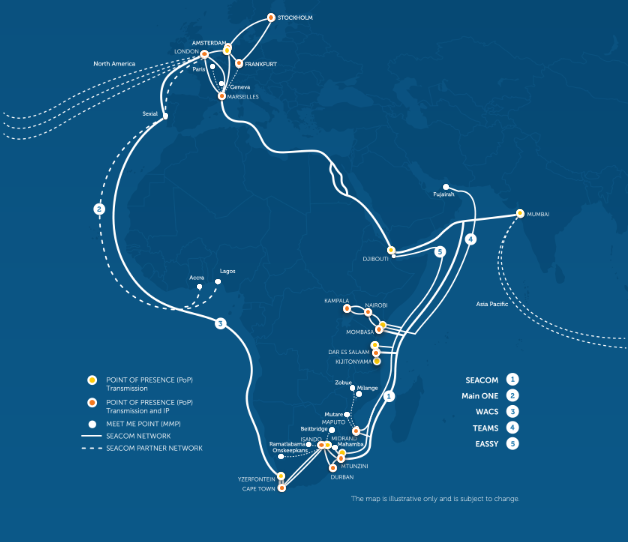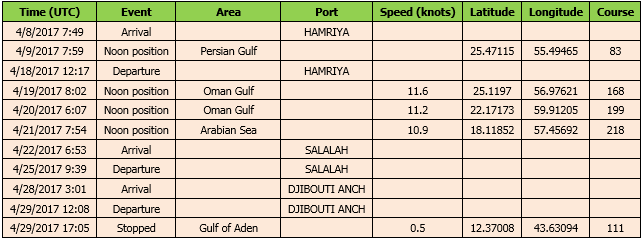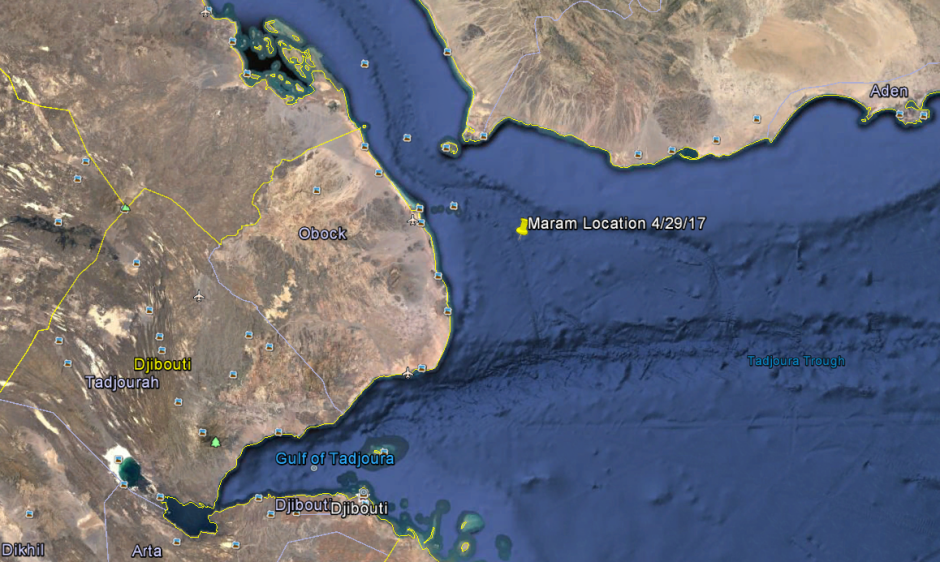|
SEACOM is experiencing a service-affecting outage on Segment 15 of the SEACOM Subsea Cable System. The marine fault is located slightly west of Djibouti in the Red Sea and occurred on the 8th April 19:00 GMT. The impact of the incident is that all linear transmission traffic on the east coast of Africa to and from Europe will be affected. Customers with IP or other managed network services will remain unaffected but could experience higher latencies with possible degradation of service, as traffic will predominantly be routed over SEACOM’s WACs transmission links on the west coast of Africa, as well as on SEACOM’s network to Asia gateways. Our repair vessel is being mobilized and a tentative repair date will be confirmed soon. SEACOM continues to monitor the situation closely and will provide necessary updates as warranted. Figure 2 – SEACOM Cable Map Source: SEACOM Source: SEACOM Press Release ANALYSIS: SEACOM’s Africa-Europe connectivity services are vulnerable because the system interconnects with the “TE North” cable system which provides onward connectivity from Egypt to Marseille, France through the Mediterranean Sea. SEACOM has experienced three previous major outages since the system was installed in 2009. The Company lost 40% of its available capacity in 2011 when the TE North cable experienced a fault in the Mediterranean and SEACOM had to scramble for restoration capacity. In 2013, the TE North cable was again hit 8 kilometers off Alexandria, Egypt in the Mediterranean. In this case, SEACOM’s rival cable, EASSy, was also affected. In 2016, the TE North cable experienced a shunt fault in the Mediterranean. By this time, SEACOM had arranged stand-by restoration capacity on the “WACS” cable system which runs up the west coast of Africa from South Africa to Europe. Consequently, the impact on SEACOM’s service was minimized. SEACOM has a private maintenance contract with Etisalat of UAE. When the fault off Djibouti occurred on 4/9/2017, Etisalat’s cable repair ship, “Maram” had just returned to her home port of Hamriya, UAE. It would appear from the vessel’s itinerary history, that she had some other commitments before she was able to set sail for the SEACOM fault location (see Figure 3 below): Figure 3 – CS “Maram” Movements April 2017 Only 9 days after the fault was reported did the “Maram” leave Hamriya. She then took three days at Salalah, Oman, presumably loading spare SEACOM cable, before leaving for the Gulf of Aden. The fault appears to have been located in the southern approaches to the Red Sea at 12.37008 N, 43.63094 E (see Figure 4 below): Figure 4 – Assumed Location of SEACOM fault Source: Pioneer Consulting
0 Comments
Leave a Reply. |
Julian Rawle, AuthorThought leadership articles and commentary on developments related to the subsea fibre optic cable industry can be found here. Archives
February 2018
Categories |






 RSS Feed
RSS Feed